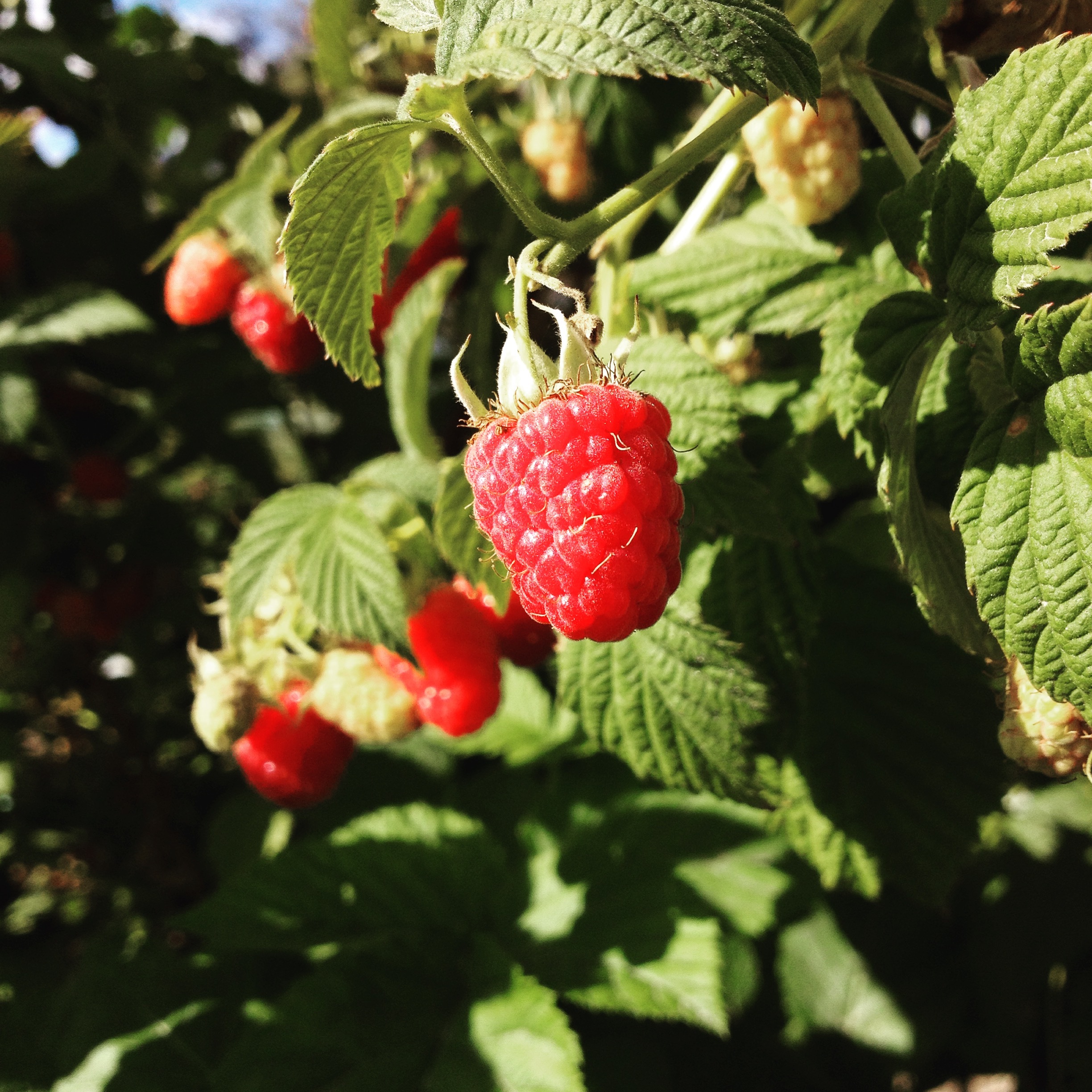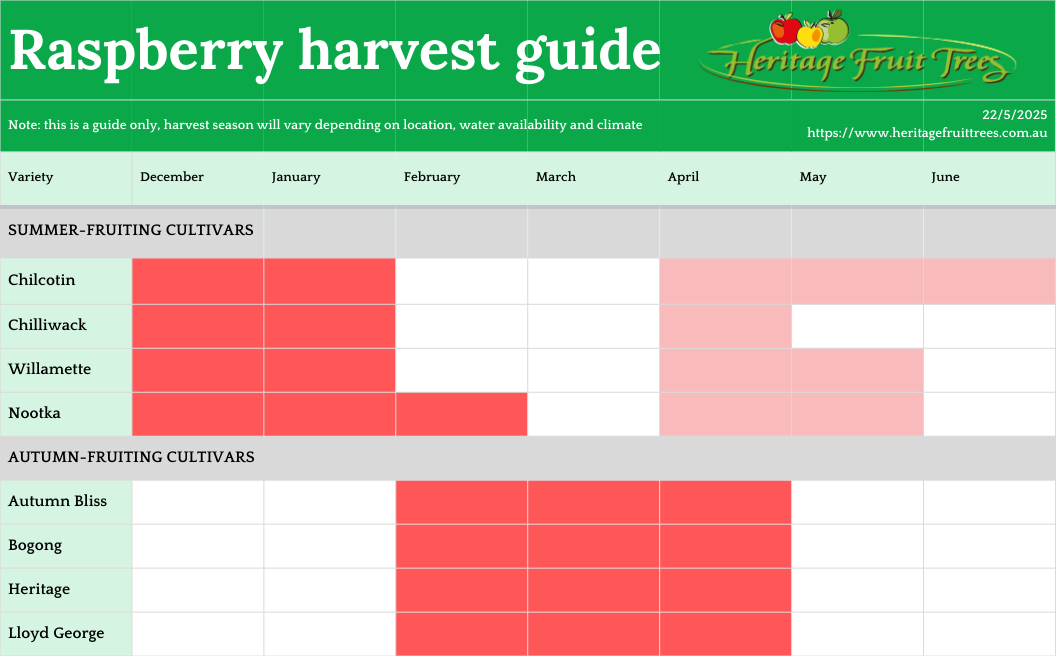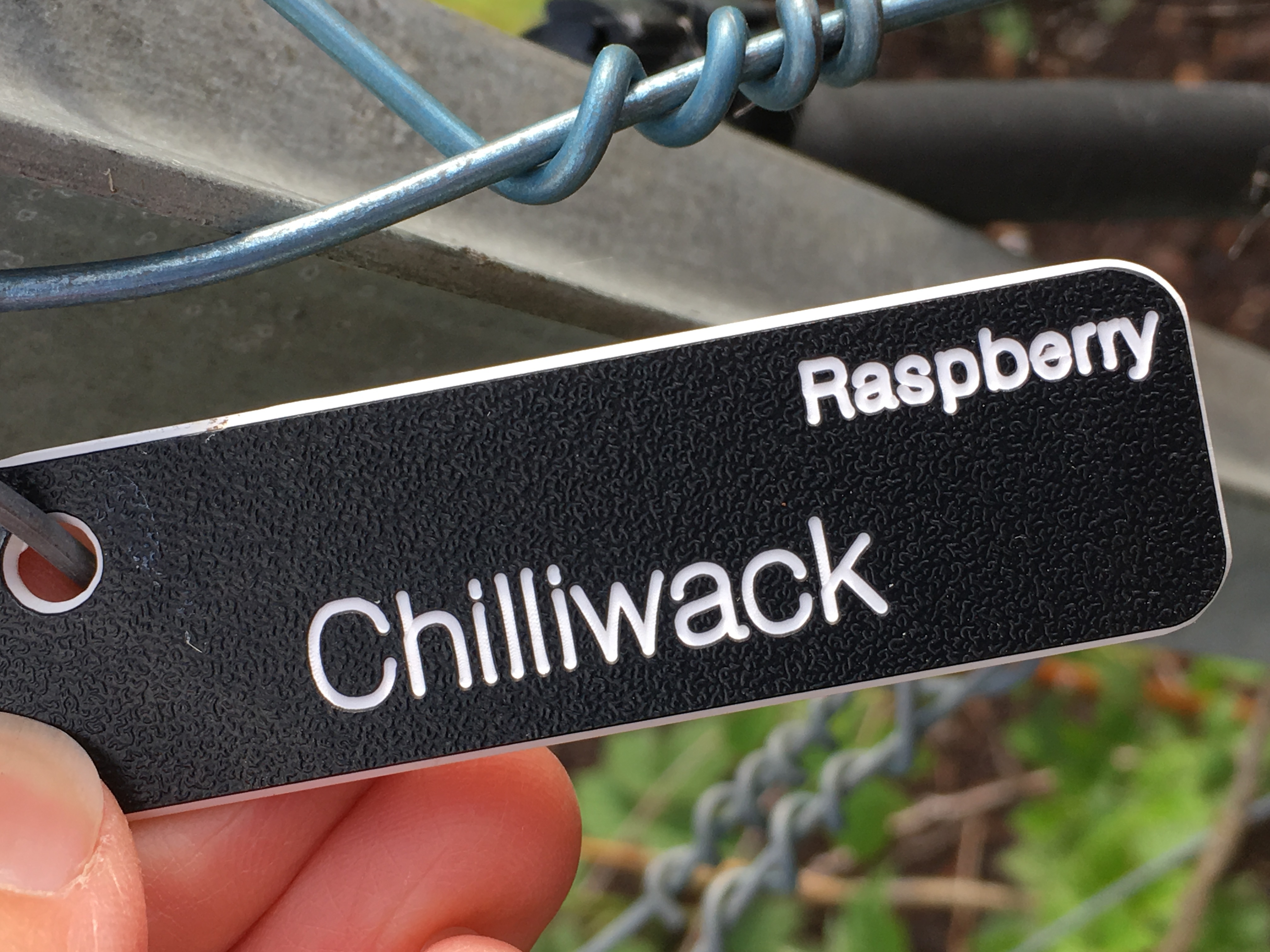Summer and autumn delights: why raspberries belong in your garden
Three great reasons to grow raspberries:
- delicious and nutritious – raspberries are packed with flavour, antioxidants, and vitamin C, making them a healthy and tasty treat.
- high yield in small spaces – raspberry canes produce abundant fruit and are well-suited to home gardens, even in compact areas.
- easy to grow and maintain – once established, raspberries are low-maintenance, hardy, and come back year after year with little effort.
Raspberries are wonderfully versatile! Enjoy them fresh or turn them into homemade jams, jellies, and syrups. They’re perfect for smoothies, cordials, raspberry-leaf tea, and even fizzy soft drinks. Whip up delicious desserts like ice cream or summer pudding, bake them into pies, or use their bright berries and foliage as charming cut flowers. Plus, they freeze beautifully for later enjoyment!

Growing raspberries: tips for success
Raspberries thrive in full or near‑full sun and need well‑drained, weed‑free soil—especially over winter dormancy. Aim for a soil pH (measured in water) between 5.5 and 6.5, and ensure it’s free of salinity. Plant canes about 30 cm apart in a slightly raised bed, and shelter them from extreme heat and strong winds to boost yield and fruit quality. Although self‑pollinating, they rely on bees and other insects for the best pollination.
- summer‑fruiting varieties (Willamette, Chilcotin, Chilliwack, Nootka) produce on second‑year canes called floricanes, plus a small autumn crop. Prune out spent canes to ground level each winter.
- autumn‑fruiting varieties (Autumn Bliss, Heritage) fruit on new season canes called primocanes—cut all canes to the ground every winter.
Plant multiple cultivars with staggered ripening to enjoy fresh raspberries throughout summer and autumn.
Plants are frost tolerant to low temperatures, however, frost can damage or destroy flowers and young fruit.
Depending on the variety, most raspberries need 900–1,700 winter chill hours, so they thrive in temperate to cool climates—cooler regions of NSW, SA, QLD, Victoria, and most of Tasmania. As a general value, summer-fruiting (floricane) varieties need more than 800 chill hours, and autumn-fruiting (primocane) varieties generally have a lower chill requirement.
In rich soils, a simple trellis (for rows) or stakes and ties (for single plants) helps keep vigorous canes upright and fruit off the ground. Feed lightly—too much fertiliser can yield soft, watery berries prone to pests and disease. Finally, regular watering during dry spells is essential for plump, flavourful fruit.
Raspberry ripening times depend on local climate and water. Generally, varieties ripen earlier the further north you go in Australia—though high, cooler areas of NSW are the exception.

Get a label with that
Make sure you never mix up your raspberry varieties! Add an engraved label to your new raspberry order—or grab custom‑engraved labels if your canes are already in the ground. These durable markers make it easy to remember which canes need summer or autumn pruning. Happy gardening!

References
- Buntain, M. and Sparrow, L (2012) Raspberry growing in Tasmania: Suitability factors for assisting in site selection (fact sheet). University of Tasmania, and Tasmanian Institute of Agriculture. Reference accessed 22/5/2025.
- Gilbert, A. (2011) Berry bounty. Hyland House Publishing, Australia.
- Glowinski, L. (1997) The complete book of fruit growing in Australia. Lothian, Port Melbourne, Australia.
- McGregor, G. (c1996-2000) Raspberry varieties: update of AG 0536. Agriculture Victoria.
- Otto, S. (1995) The backyard berry book: a hands-on guide to growing berries, brambles, & vine fruit in the home garden. OttoGraphics, Maple City, Michigan, USA.
- Stone, C. (1992) The Australian berry book: preparing & growing your own berry fruit (2nd ed). Pioneer Design Studio, Lilydale, Australia.
- Other useful references.
All images: Copyright Heritage Fruit Trees 2025
